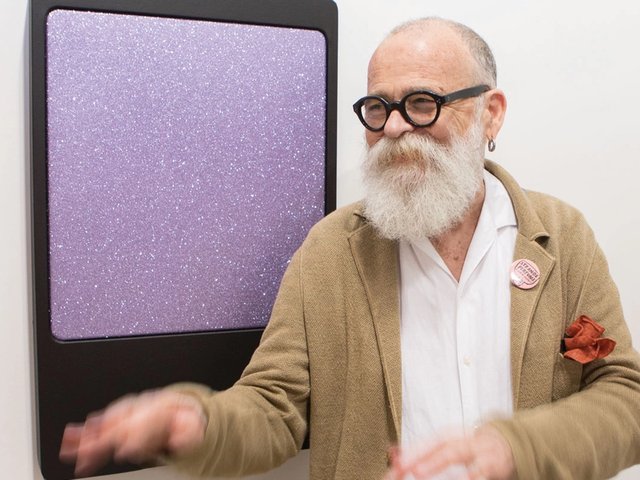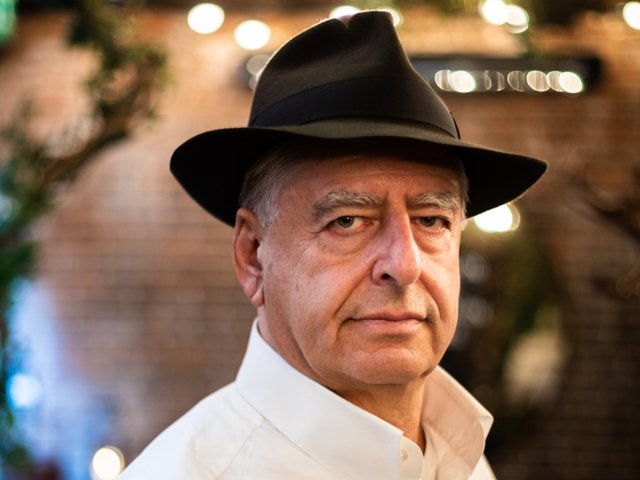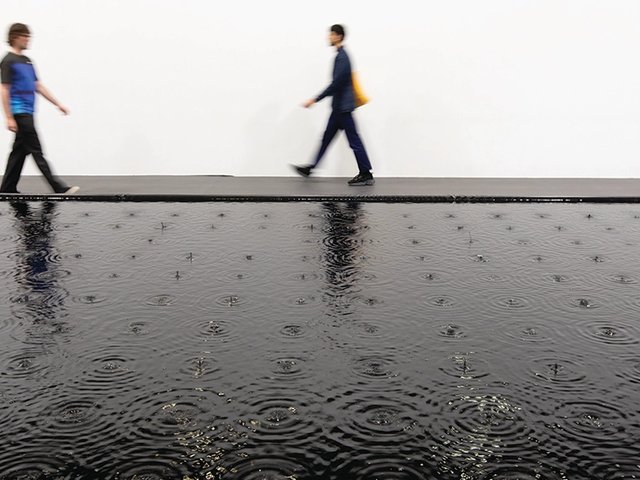John Armleder is having a moment. The Schirn Kunsthalle in Frankfurt opened a major show by the Swiss artist last week (until 1 September), which will be followed by exhibitions in Los Angeles at David Kordansky Gallery (27 June-24 August), the Aspen Art Museum (4 July-27 October) and Mamco in Geneva (4 July-Spring 2020). At Art Basel, he is once again manning his stand called Ecart—an artist-run project that has had a presence at the fair since 1980, and which this year is showing works by the late Gustav Metzger. The Ecart gallery closed in 1990 but Armleder maintains a stand even though a permanent gallery space is normally a prerequisite for participating in the fair. Fitted out with furniture from the ballroom of his parents’ hotel, the Ecart stand is one of the busiest meeting points at Art Basel; artists, dealers and friends stop by all day long. “I like the idea that people can come and hang out,” Armleder says. “Also, because I’m lazy, I can sit, and people come to me.” We pried him away from his stand to pick his favourite works on the second floor of the fair.
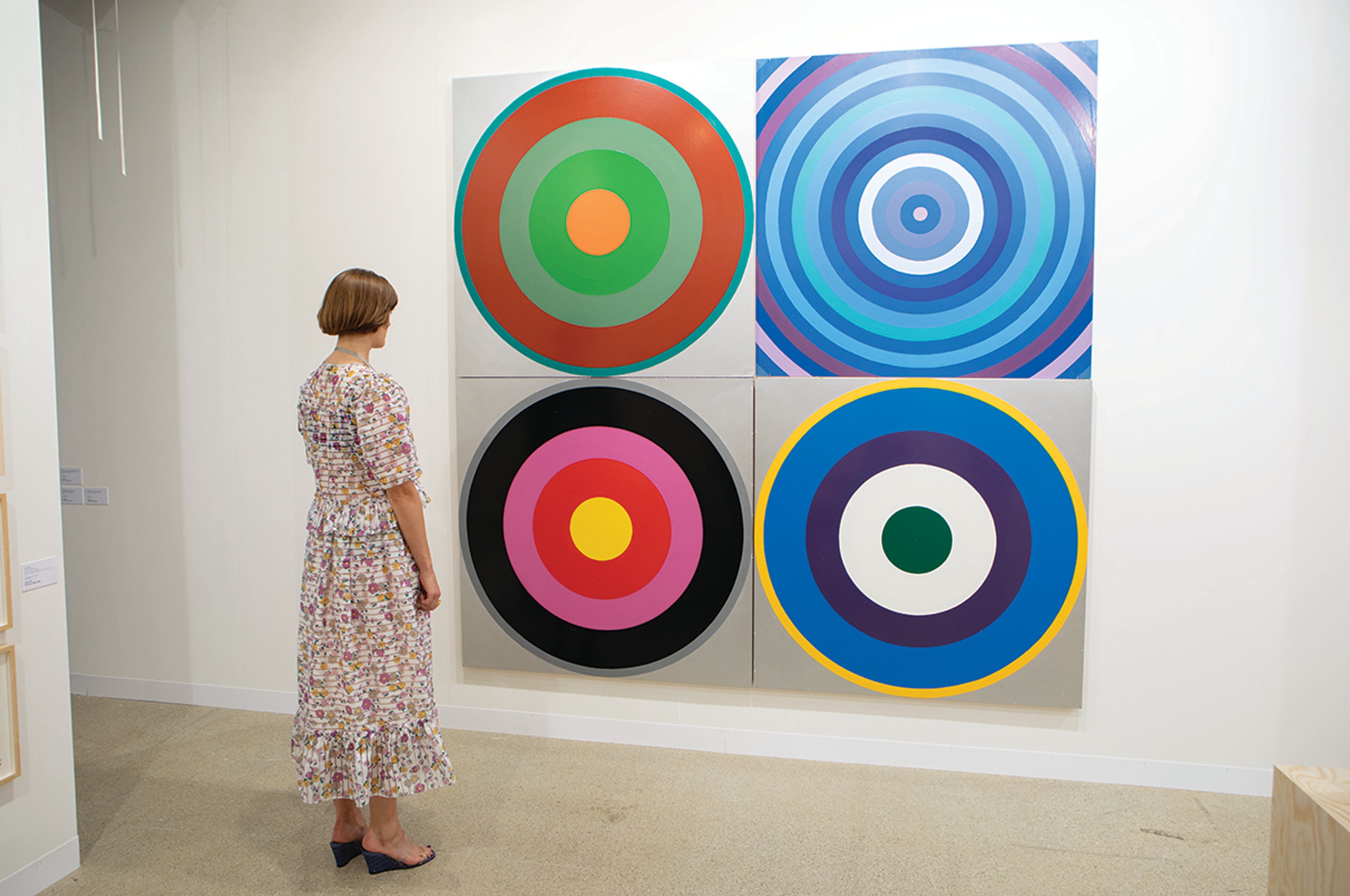
Poul Gernes Untitled (Target Painting, 1966-69), series of four paintings, Galleri Nicolai Wallner: “I’m cheating a bit here because I own a work by him. This is an artist who is no longer with us [the Danish artist died in 1996]. I like that Gernes had one foot in the art world and one outside. I’ve always been interested in people who are out of the system. People claim that I’m like that but it’s of course an illusion. As long as you’re on this planet, you’re part of the game. And as an artist you have your responsibilities because you have the chance to look at things with a distance that a lot of people don’t have. Gernes was concerned with the social impact of art: what role it can play in people’s lives. That’s why he made works for hospitals and schools. He’s sort of making a comeback.” © David Owens
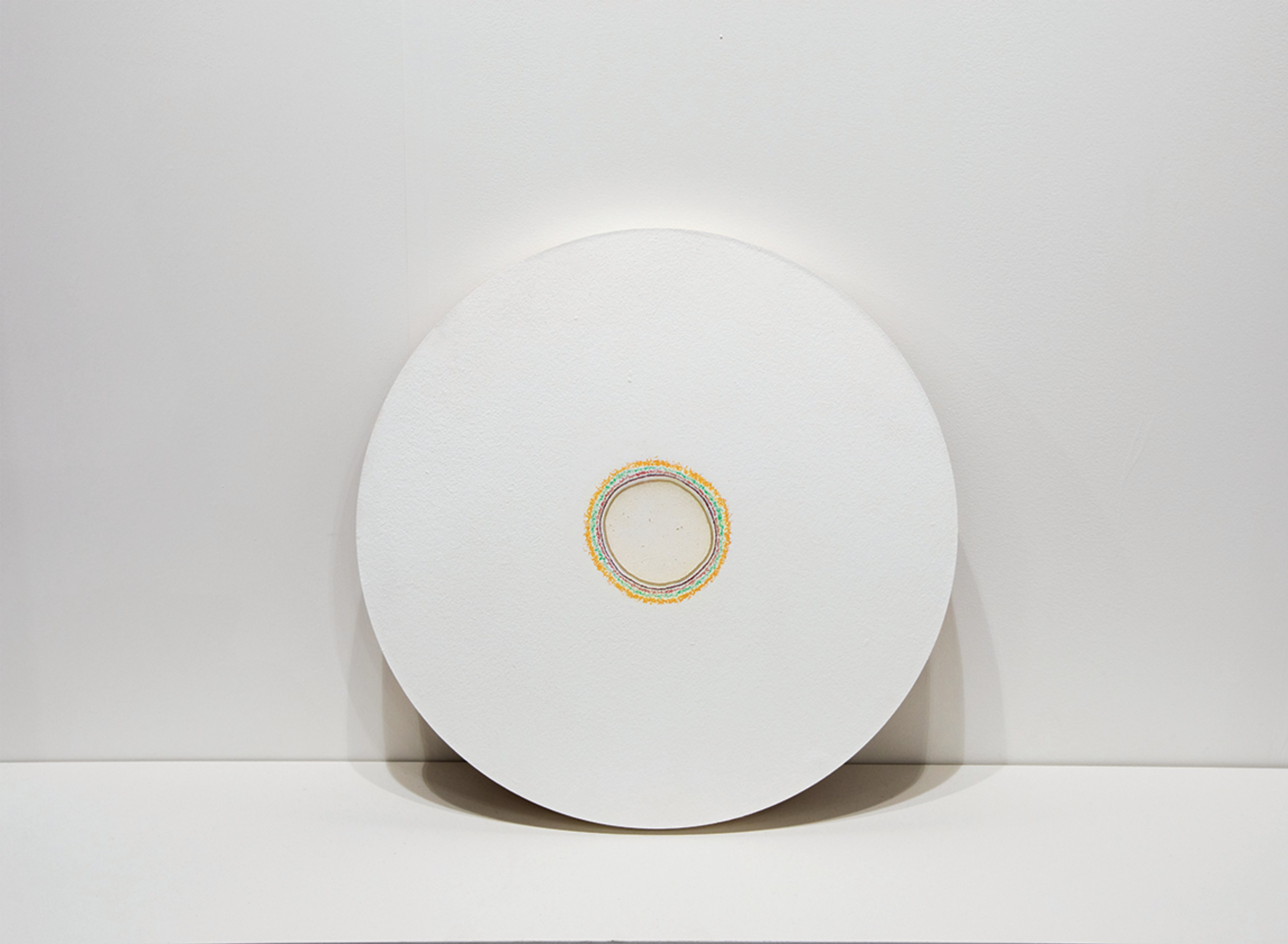
Pierre Huyghe, Timekeeper (Drill Core) Consortium (2018), Galerie Chantal Crousel: “This is almost a target. It reminds me of a target or a flower, which is basically the same thing. Huyghe does very different kinds of work. I like what he does because there is the involvement with the physical world, he goes into caves and stuff like that. For this work he sanded the surface of a wall so you can see the layers of paint that came before. I also like how it’s installed [on the floor of the stand]. He doesn’t want the work to be hung on the wall because it is a wall itself.” © David Owens
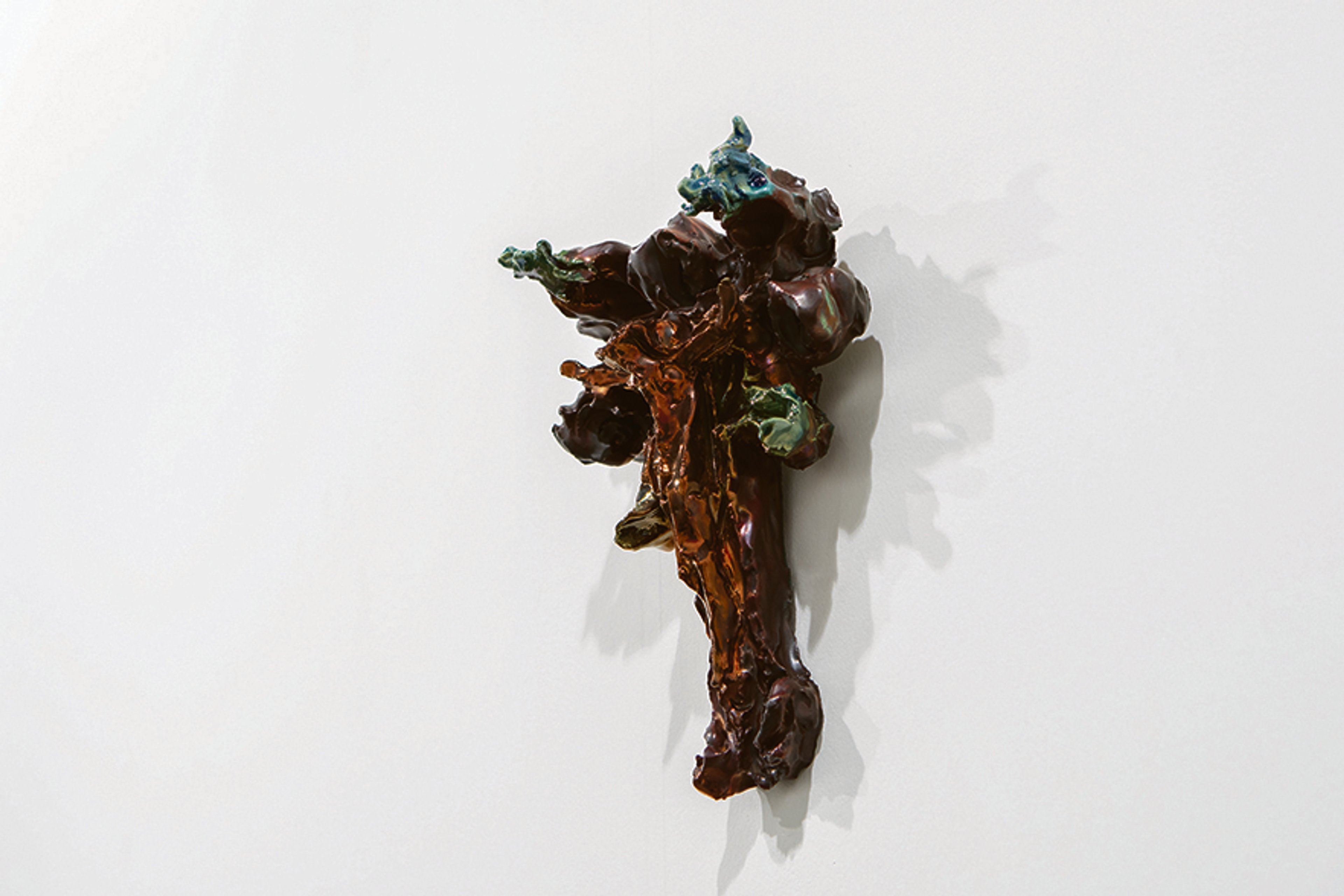
Lucio Fontana, Crocefisso (1948), Galerie Vera Munro: “Fontana did a lot of different types of work, which is one of the reasons I like him. This object intrigues me. Of course, he’s better known for his slashes, but people have only recently started to look at his other works. He liked hotels too, which takes me back to my family [who owned a hotel]. I lived in my parent’s hotel until I was ten and living there impressed two things upon me: first, I had to leave my room for guests, so I had all my toys in a box, ready to move. Second, you’re living in a place where people come from all over the world, which makes you very open minded—at least it should.” © David Owens
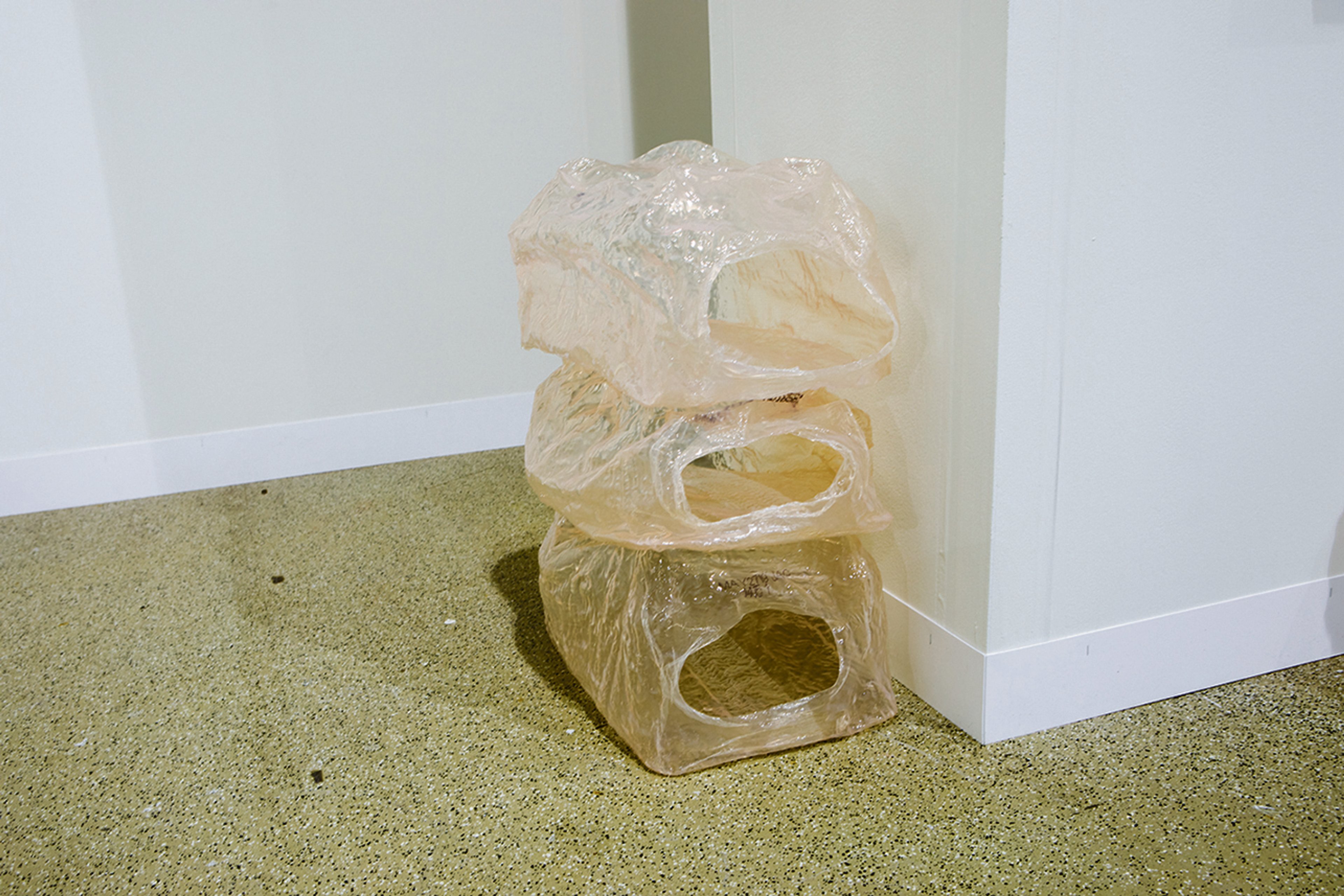
Shadi Habib Allah, Instock (2018), Reena Spaulings Fine Art: “I don’t really know this artist, but it’s interesting that I have picked some very familiar names and others that I don’t know at all. I was attracted to the object itself, not really for any other reason. He also seems to be a multi-disciplinary artist. It’s revealing that I haven’t chosen artists who only do one thing. This work is made from the plastic you find wrapped around bottles, which he then casts in resin. I just saw the work and thought it was great. I also respect [the gallerist’s] choices, she always shows wonderful work.” © David Owens
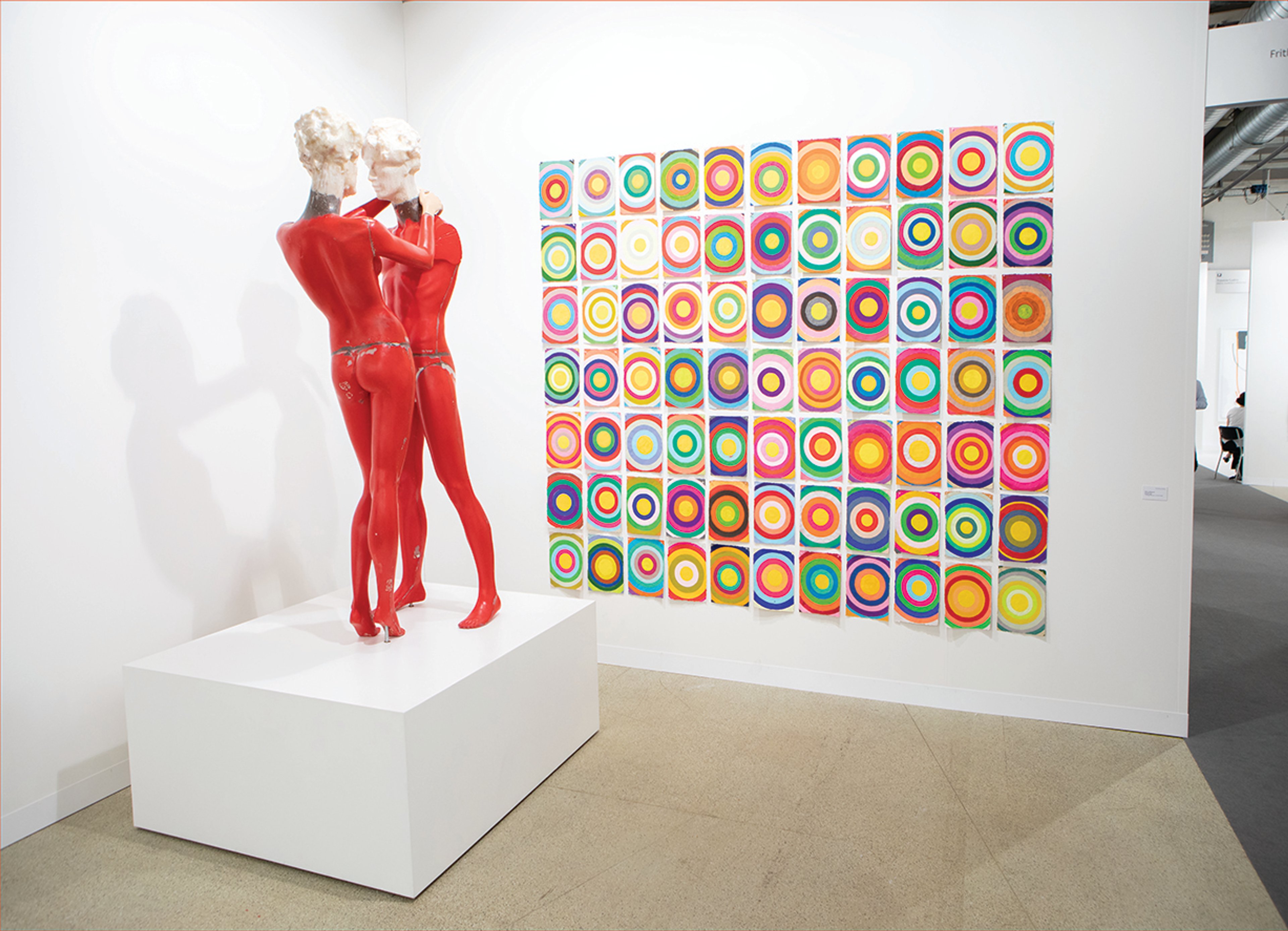
Polly Apfelbaum, Sun Targets (2018), Frith Street Gallery: “Another target! I’m against restricting the ideas of a work, but of course the target is a seminal image that many artists have used in one form or another. I really like [the US artist] Kenneth Noland, who made famous target paintings and is the father of Cady Noland, who also just had a show in Frankfurt [at the Museum für Moderne Kunst]. Her work has little to do with her father’s but she’s also a great artist. Noland’s targets were made in a period of American painting that interests me. I have shown with Polly Apfelbaum before, in New York.” © David Owens
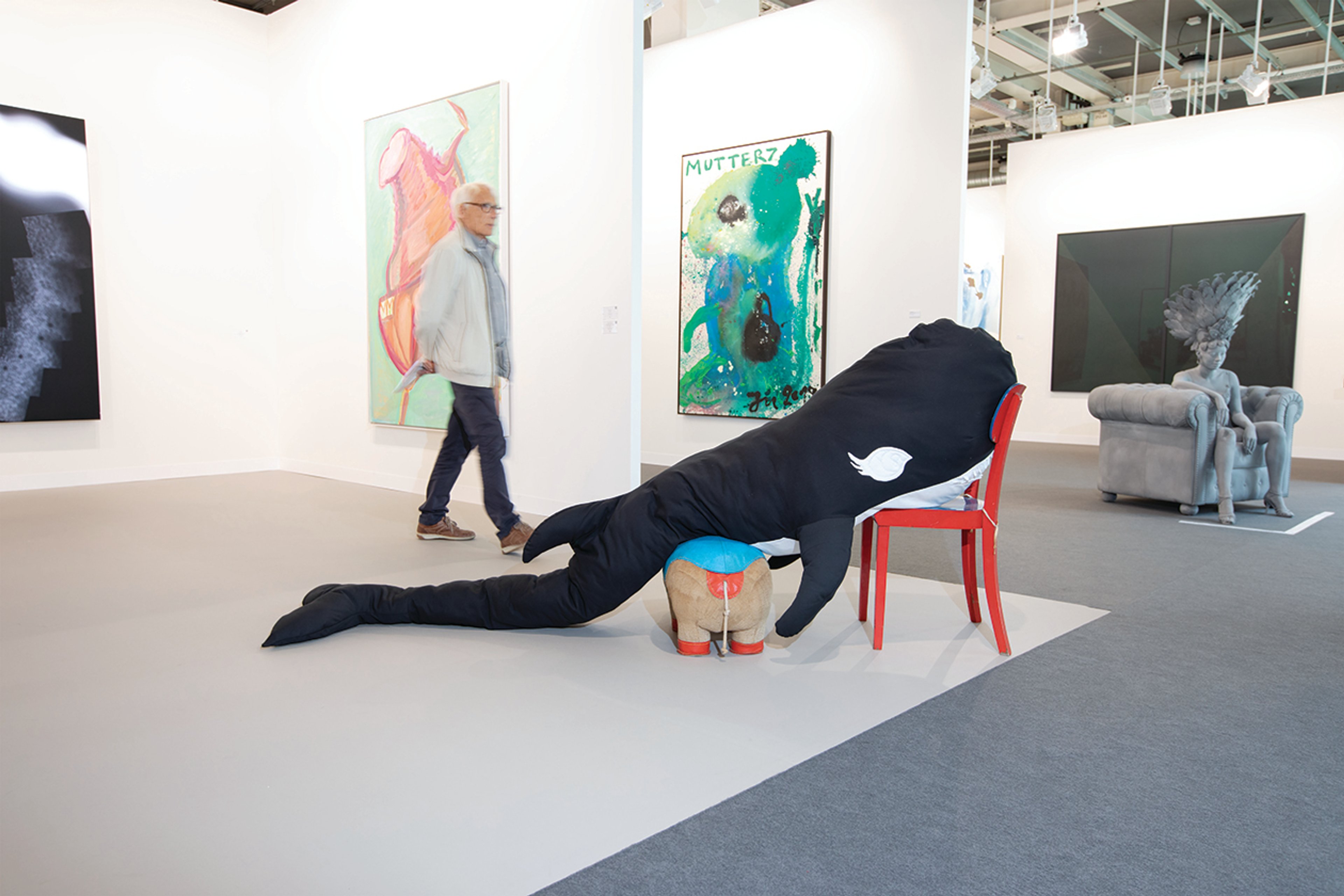
Cosima von Bonin, Killer Whale with Long Eyelashes I (Rhino version) (2018); Rhino by Renate Müller, Germany (1960s), Petzel: “She’s a very good artist, this gallery has a lot of artists that I like. The piece incorporates a rhino made by Renate Müller, who made educational and therapeutic toys for children in East Germany, with Cosmia’s whale. I like it because [Von Bonin combines] an object by a creator who had specific reasons for making her works [that was not art]. Artists really like Renate’s pieces. I also like that Cosima combined the soft whale with the semi-hard rhino. The fact that she’s a woman interests me too. I think women have a perspective on art that men are unable to have for cultural reasons. So, it expands the perception.” © David Owens
Poul Gernes Untitled (Target Painting, 1966-69), series of four paintings, Galleri Nicolai Wallner: “I’m cheating a bit here because I own a work by him. This is an artist who is no longer with us [the Danish artist died in 1996]. I like that Gernes had one foot in the art world and one outside. I’ve always been interested in people who are out of the system. People claim that I’m like that but it’s of course an illusion. As long as you’re on this planet, you’re part of the game. And as an artist you have your responsibilities because you have the chance to look at things with a distance that a lot of people don’t have. Gernes was concerned with the social impact of art: what role it can play in people’s lives. That’s why he made works for hospitals and schools. He’s sort of making a comeback.” © David Owens
In pictures: Art Basel veteran John Armleder targets his favourite pieces at the fair
The Swiss artist, who has had a stand at the fair since 1980, guides us round the second floor

Polly Apfelbaum, Sun Targets (2018), at Frith Street Gallery © David Owens


